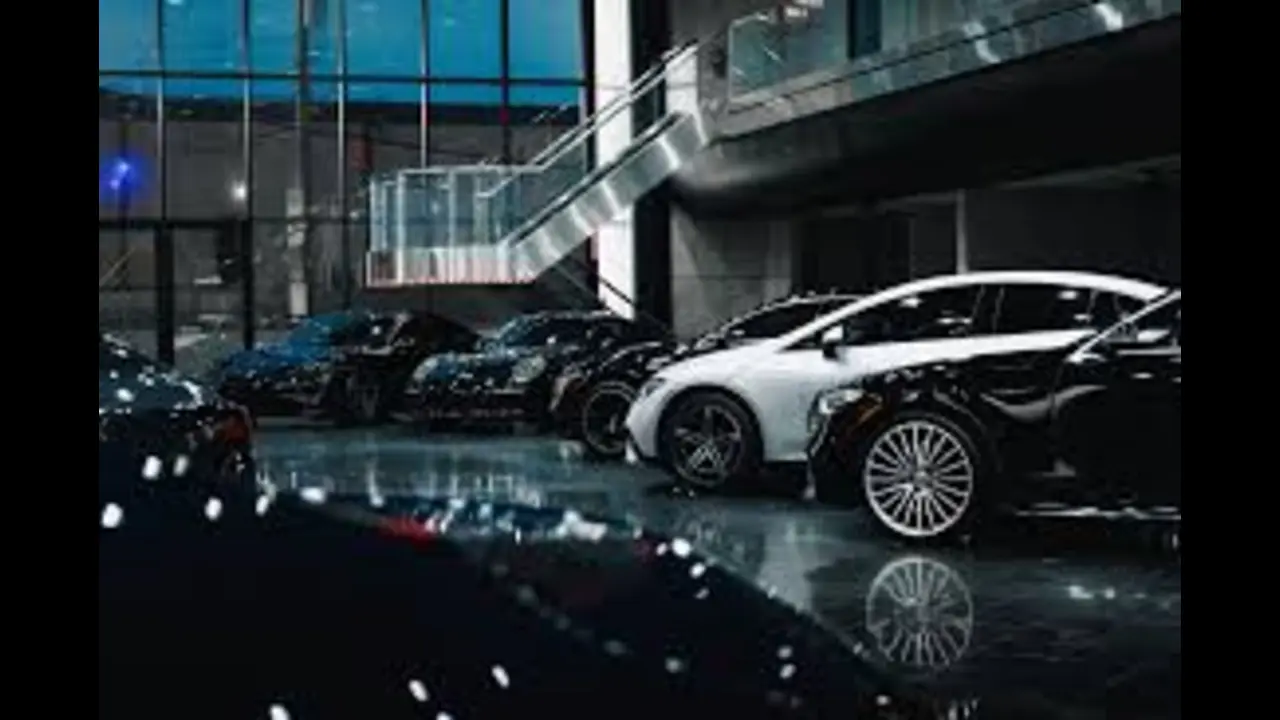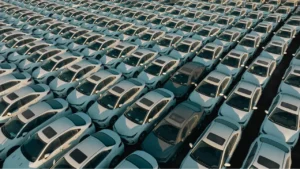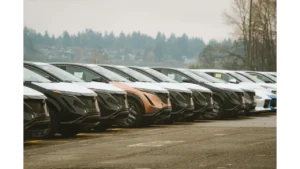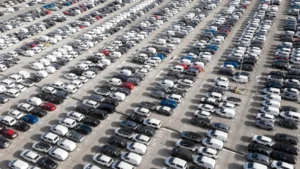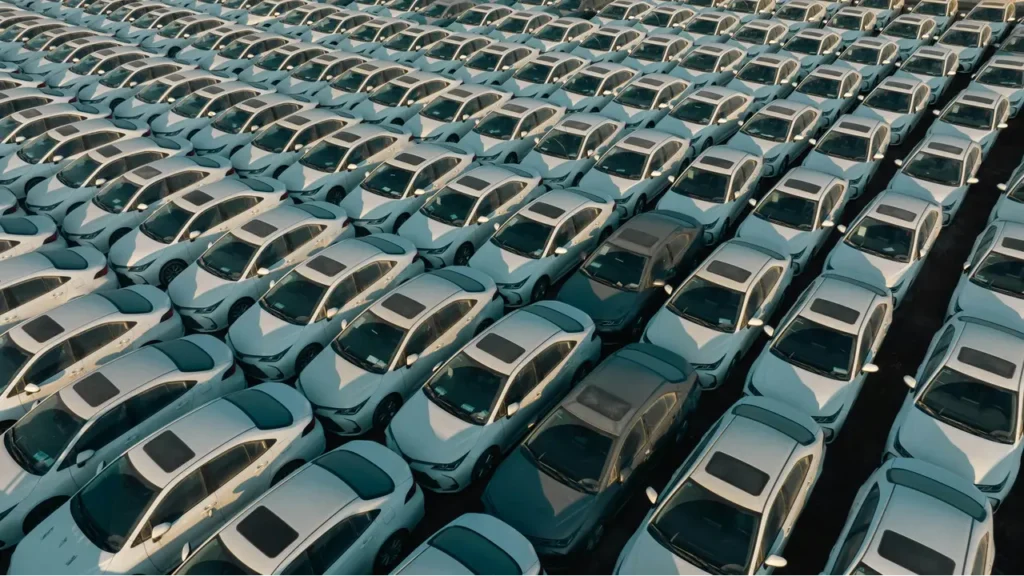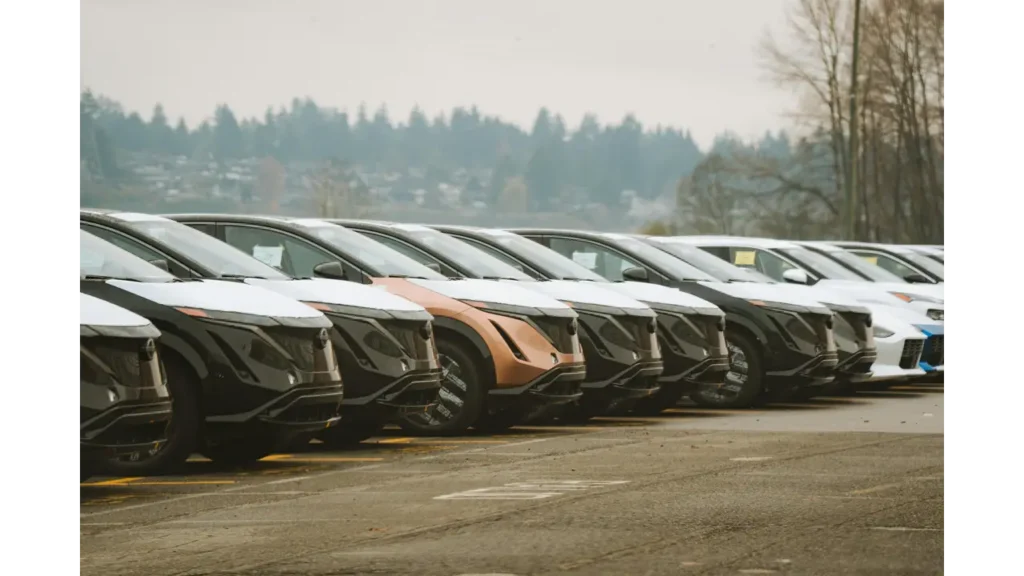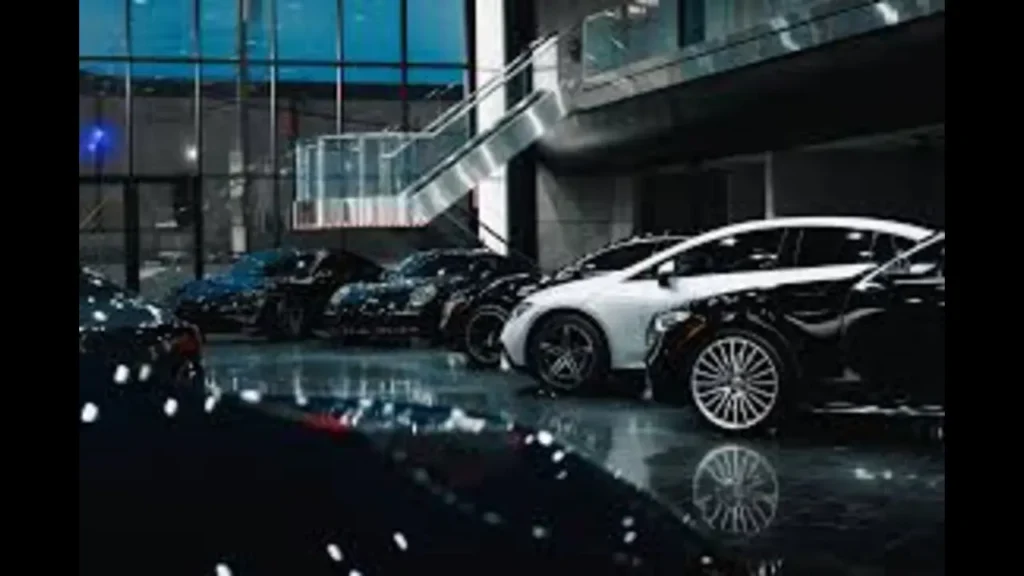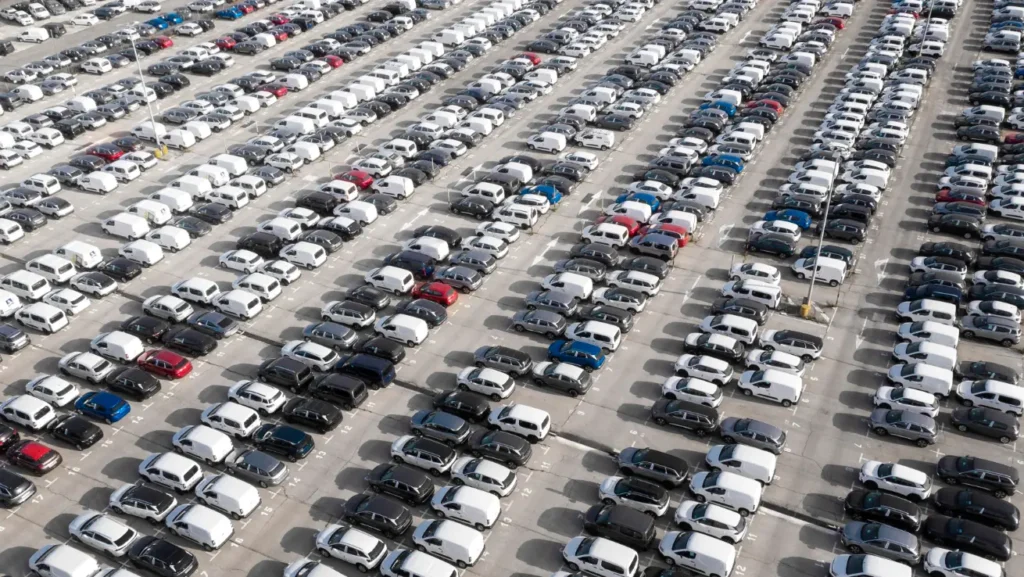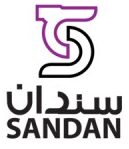Introduction
Oman’s automotive market in 2025 reflects both resilience and evolution. The nation’s vehicle landscape is shaped by its vast terrain, a blend of modern urban infrastructure, and deep-rooted cultural preferences. With Toyota maintaining an unmatched lead, newer brands such as Jetour and MG are reshaping buyer perception, while the used-car sector continues to benefit from this dynamic interplay. For anyone considering a car purchase—especially in the used segment—understanding which models dominate the new market provides clear insight into resale potential, maintenance access, and long-term reliability.
In 2025, Oman’s car buyers favor vehicles that can withstand demanding conditions while providing comfort for everyday commuting. Pickups and SUVs dominate, not merely due to preference but necessity. Rugged roads, desert adventures, and long intercity distances make durability and serviceability key buying factors. The best-selling vehicles also mirror lifestyle aspirations, where the Land Cruiser’s prestige meets the Hilux’s practicality. At the same time, emerging Chinese and Korean brands are gaining traction through affordability and design innovation, signaling an evolving market identity.
The used-car sector, which forms a substantial part of Oman’s vehicle economy, closely tracks new sales patterns. Buyers often pursue secondhand models of the same brands that dominate new registrations because those vehicles ensure accessible service centers, spare parts, and high resale demand. By examining the top-selling models of 2025, buyers can make informed, context-driven decisions grounded in Oman’s specific automotive realities.
Key Takeaways
- Toyota retains dominance in Oman’s 2025 vehicle market, driven by the Hilux and Land Cruiser.
- Pickups and SUVs lead due to Oman’s terrain and climate requirements.
- New Chinese entrants like Jetour show rapid growth, altering market competition.
- Understanding the best-selling new models helps used-car buyers assess resale value, service access, and reliability.
- EV and hybrid segments are slowly emerging but remain secondary in Oman’s current vehicle mix.
Table of Contents
Oman’s 2025 Vehicle Market Landscape – Foundational Context
Oman’s vehicle market in 2025 presents a mix of traditional dominance and emerging diversity. The market expanded by an estimated 13.5% in the first half of the year, with Toyota capturing nearly half of all new registrations. This dominance is not coincidental—it’s the product of decades of trust, services reach, and model adaptation to local conditions. Toyota’s Hilux, Land Cruiser, and Land Cruiser Pickup occupy the top positions, followed by Hyundai, MG, and Jetour.
The country’s driving environment heavily influences these choices. Urban centers like Muscat prioritize comfort and efficiency, while rural and desert areas emphasize toughness and endurance. Pickups such as the Hilux thrive in both contexts, offering flexibility between personal and commercial use. SUVs like the Land Cruiser symbolize reliability and status, appealing to professionals and families alike.
Omani buyers also value durability over short-term aesthetics. The climate, characterized by high temperatures and occasional sandstorms, demands vehicles that resist wear and retain mechanical integrity. This explains why models with proven off-road capabilities dominate sales charts. Service accessibility further drives these preferences—Toyota and Hyundai maintain dense service networks, ensuring lower maintenance risks.
Cultural preferences also shape the automotive landscape. Many buyers choose models that reflect both functionality and prestige, often preferring larger vehicles suitable for family use and social occasions. In addition, color preferences are notable: white remains the top choice, favored for its heat reflection and resale appeal.
The 2025 data shows how the car market serves as a reflection of Omani lifestyles—practical yet aspirational, deeply local but open to global brands. For used-car buyers, this context is critical. The models leading new sales today will shape the used-car inventory and resale dynamics over the next few years, making this analysis a roadmap for smart purchasing decisions.
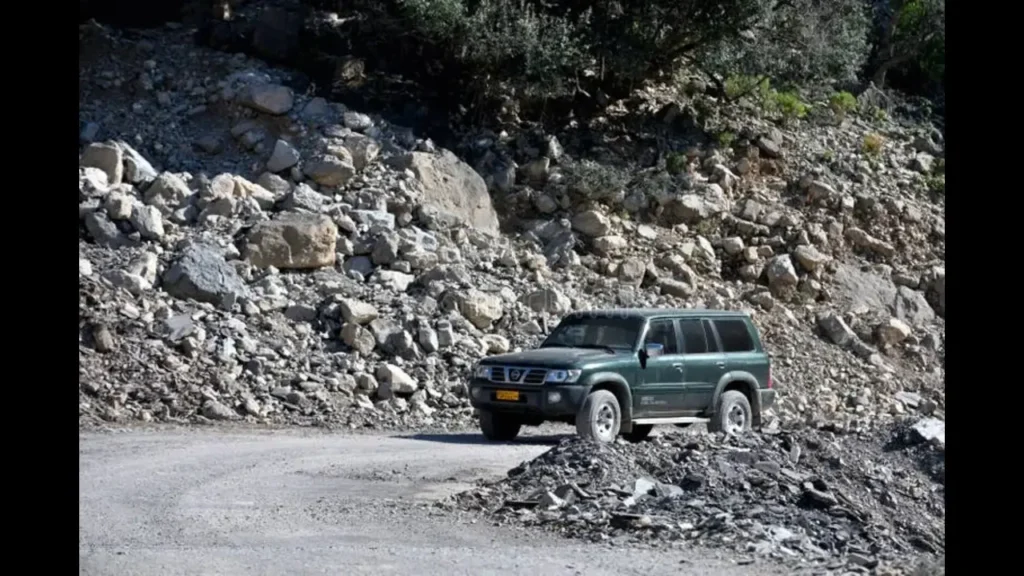
Why “Best-Selling Cars” Matter to Used-Car Buyers in Oman
The best-selling cars in any given year define the pulse of a market—and in Oman, they are also the backbone of the used-car sector. A model’s dominance in new sales translates into stronger demand in the resale market, easier access to genuine parts, and lower maintenance costs. When a vehicle like the Toyota Hilux leads new registrations by a wide margin, it means mechanics are familiar with its systems, spare parts are abundant, and potential buyers trust its longevity.
Used-car buyers in Oman often prioritize long-term reliability and service convenience. Popular models have a larger ecosystem supporting them—authorized dealers, specialized workshops, and ready availability of both OEM and aftermarket components. For example, a used Land Cruiser not only holds its value but is easier to service anywhere in the country, from Muscat to Salalah. In contrast, newer brands with limited networks may offer attractive prices but pose challenges for maintenance and resale.
Depreciation trends further highlight the advantage of selecting models with strong new-sales performance. A Hilux or Land Cruiser typically retains a higher percentage of its value after five years compared to lesser-known models. This consistent demand makes them safer financial bets, especially in Oman’s cost-sensitive used-car market.
Terrain and climate also influence used-vehicle viability. Buyers prefer models originally designed for the region—robust suspensions, strong air conditioning, and engine cooling systems suited for heat and sand. The most popular new models already align with these requirements, making their used counterparts equally appealing.
In 2025, the growing influx of Chinese brands such as Jetour introduces more options but also caution. These models provide modern design and affordability yet lack long-term data on durability in local conditions. Used-car buyers benefit from observing their first-generation resale performance before committing.
Ultimately, Oman’s best-selling new cars serve as a compass for used-car investors. They reveal which brands the market trusts, which models adapt best to the local environment, and which vehicles promise both reliability and value retention—factors that collectively define smart buying decisions.
Top 5 New Vehicle Models in Oman 2025 and Implications for Used-Car Buyers
Oman’s 2025 car rankings reaffirm Toyota’s deep integration into the nation’s automotive DNA, but they also signal the growing impact of newer Asian manufacturers. For buyers evaluating used vehicles, understanding why each model succeeded in new sales clarifies long-term reliability, servicing ease, and resale potential.
Toyota Hilux – Oman’s Most Purchased Pickup
The Toyota Hilux dominates Oman’s roads with an estimated 13.8% share of new registrations in the first half of 2025. Its popularity stems from consistent performance across harsh environments. The Hilux’s ladder-frame chassis, off-road suspension, and proven 2.8-liter diesel engine suit both urban commuting and rugged desert use. Fleet operators, small businesses, and private owners equally favor it for its endurance and high payload capacity.
In the used-car sector, the Hilux is a benchmark for resale value. Vehicles five years old often retain 65–70% of their original price, far exceeding most sedans and compact SUVs. Parts are widely available across Oman’s service centers, and mechanics are intimately familiar with its systems. Buyers inspecting a used Hilux should focus on suspension wear, pickup bed condition, and underbody corrosion from off-road exposure. Its steady demand ensures quick resale, making it one of the safest investments in Oman’s vehicle market.
Toyota Land Cruiser – Prestige and Longevity Combined
The Toyota Land Cruiser continues to represent status, comfort, and reliability. While slightly behind the Hilux in total sales, it leads the luxury SUV category. Its V8 and newer turbocharged V6 options offer high torque and endurance, while its build quality suits Oman’s demanding conditions. The Land Cruiser is favored among business owners and families who want luxury without compromising on performance.
Used-car buyers gravitate toward the Land Cruiser because of its strong residual value and robust service network. Despite higher maintenance costs, the vehicle’s reliability record offsets expenses through reduced mechanical failure. Pre-owned models with full service history and minimal off-road use are especially prized. Buyers should check for transmission performance, electronic system integrity, and genuine service documentation.
Jetour T2 – The Emerging Challenger
Jetour’s rapid ascent—over 500% sales growth in 2025—shows a shifting perception of Chinese automakers in Oman. The T2’s success lies in its blend of modern design, competitive pricing, and technological appeal. Its turbocharged engine, digital interior interface, and SUV proportions attract younger buyers seeking contemporary style without paying premium Japanese prices.
For used-car buyers, the T2 presents opportunity and uncertainty. Affordability and low mileage resale listings make it tempting, yet the long-term availability of parts and service expertise remains developing. Maintenance histories should be verified carefully, as aftermarket support is still limited compared with Toyota and Hyundai. Buyers valuing initial cost savings but willing to manage higher potential depreciation may find the T2 a calculated risk with potential future upside.
Hyundai Accent and Elantra – Practical Urban Choices
Hyundai maintains steady second-tier presence in Oman, led by the Accent and Elantra models. These sedans thrive in urban settings like Muscat, where compact size and fuel efficiency outweigh off-road capabilities. The Elantra’s modern styling and fuel economy have made it a consistent performer in both new and used segments.
Used-car buyers benefit from Hyundai’s established service network and moderate maintenance costs. Both models are ideal for commuters and families seeking reliability without the premium price tag. Inspection priorities include gearbox response, interior electronics, and paint integrity under high sun exposure. Their moderate depreciation and low operating costs make them dependable entry points into Oman’s used-car market.
MG ZS and MG5 – Budget-Friendly Alternatives
MG remains a visible, if fluctuating, presence in Oman’s 2025 charts. The MG ZS compact SUV and MG5 sedan appeal through affordability and feature-rich interiors. For budget-conscious buyers, they deliver strong value for the initial years of ownership.
Used examples of MG vehicles offer accessible pricing but demand careful evaluation. The brand’s resale performance trails Toyota and Hyundai due to limited perception of long-term reliability. Buyers should verify dealership-maintained records and check for electronic system functionality, as repairs may involve higher costs relative to the vehicle’s resale value.
Together, these top models define Oman’s market hierarchy. Each reflects a distinct buyer segment—from the utility-focused pickup owner to the urban commuter and the aspirational luxury driver. Understanding these dynamics enables used-car shoppers to match their priorities with proven models that retain value and fit Oman’s driving realities.
Buyer Decision Factors for Used-Car Purchases in Oman
Used-car purchasing decisions in Oman are guided by practical reasoning shaped by climate, road conditions, and long-term ownership value. Every prospective buyer—whether local or expatriate—considers a set of factors that balance reliability with financial sensibility.
Resale and Depreciation:
Best-selling new vehicles tend to depreciate more slowly because they command consistent demand in the secondhand market. The Toyota Hilux and Land Cruiser exemplify this trend, often selling within days of listing. In contrast, newer entrants like Jetour or MG experience steeper depreciation as buyers remain cautious about untested long-term durability.
Service and Spare-Parts Access:
A dense service network is invaluable. Toyota and Hyundai dominate this aspect with authorized centers across the country. Availability of affordable spare parts reduces maintenance risk, ensuring ownership continuity. Limited network coverage for Chinese brands can lead to longer downtime or imported parts, which can affect total ownership cost.
Terrain and Driving Purpose:
Oman’s geography demands specific vehicle attributes. Pickups and SUVs outperform sedans on rural or sandy routes, making them preferred in interior regions. City dwellers often favor smaller sedans or compact SUVs for ease of parking and better fuel economy. Aligning the vehicle type with lifestyle reduces wear and long-term cost.
Fuel Economy and Engine Efficiency:
With fuel prices relatively stable yet significant in total ownership cost, efficiency matters. The Hilux’s diesel variants are popular for their torque and lower fuel consumption under heavy load. Urban drivers value the Accent or MG5 for economical daily commuting.
Aesthetic and Colour Preferences:
White vehicles dominate Omani roads because they reflect heat and command higher resale value. Buyers often avoid darker shades that show dust or heat damage quickly. Colour choice, though aesthetic, directly influences long-term market appeal.
Expatriate Turnover and Inventory Supply:
Expats contribute heavily to used-car availability. When contract cycles end, a wave of well-maintained vehicles enters the market, especially from metropolitan areas. Savvy buyers track these cycles to purchase high-value cars at competitive prices.
EV and Hybrid Influence:
While electric vehicle adoption grew by over 30% in 2025, infrastructure remains in development. Conventional fuel vehicles still dominate, though hybrid models are gaining interest. For used-car buyers, hybrids currently represent an experimental option rather than a mainstream choice.
These considerations form a blueprint for intelligent purchasing. Buyers who prioritize models with proven track records, strong servicing ecosystems, and alignment with Omani terrain secure vehicles that last longer and hold value better in the nation’s distinctive driving environment.
How to Inspect and Evaluate a Used “Best-Selling Model” in Oman
A thorough inspection transforms a potential purchase into a long-term asset. In Oman’s climate, where vehicles endure heat, dust, and uneven roads, detailed evaluation ensures a fair deal and avoids expensive surprises.
Inspection for Pickups and SUVs:
For models like the Hilux or Land Cruiser, begin with chassis and underbody checks. Look for signs of heavy off-road use—bent suspension arms, frame rust, or sand ingress in the drivetrain. Test the four-wheel-drive engagement system and verify that all differential modes function smoothly. Inspect the air-conditioning system, as sustained desert heat often strains compressors and seals.
Inspection for Sedans and Compact Cars:
In the case of Hyundai or MG sedans, prioritize engine condition and cooling efficiency. Overheating episodes can cause lasting damage in Oman’s temperature extremes. Examine paint and interior materials for UV wear, ensuring dashboard integrity and upholstery durability. Transmission response should be immediate without slipping; hesitation often signals poor maintenance or fluid neglect.
Documentation and Service Verification:
Authentic service history significantly increases reliability confidence. Buyers should request dealership stamps, warranty claims records, and recent maintenance invoices. Vehicles imported from other GCC countries require additional diligence—ensure compliance with Omani registration standards and confirm that parts compatibility aligns with local specifications.
Timing and Market Dynamics:
Seasonal variations affect used-car pricing. Post-summer months and year-end often bring an influx of listings from fleet renewals and expat departures. During these periods, buyers can secure better bargains on high-demand models like the Hilux or Accent.
Negotiation Strategy:
Knowledge of market dominance empowers negotiation. For example, while Toyota models command high demand, ample supply gives room for competitive offers on vehicles with minor cosmetic wear. Demonstrating awareness of depreciation data and maintenance norms positions a buyer as informed and credible, often resulting in fairer pricing.
An inspection grounded in these principles ensures that a used vehicle meets both functional expectations and investment logic. In Oman’s vehicle ecosystem, diligence pays dividends—the right combination of model, condition, and timing transforms a standard purchase into a reliable, value-retaining asset.
Top Mistakes to Avoid When Buying a Used Car in Oman
Oman’s used-car market offers immense variety—but also traps for the unwary. Buyers often focus on price and overlook subtle details that determine whether a deal becomes a gain or a liability. Understanding the most common mistakes prevents costly outcomes and ensures the vehicle truly fits Oman’s demanding driving conditions.
1. Ignoring the Car’s Origin and Service History
One of the most overlooked red flags in Oman’s used-car listings is imported vehicles without full documentation. Cars brought in from the UAE, Saudi Arabia, or the United States might appear newer or cheaper, but often lack service history consistency or suffer flood or accident damage. Always verify the car’s VIN against ROP (Royal Oman Police) registration and request full service logs. Vehicles maintained through official dealerships hold their value longer and deliver better performance.
2. Overlooking Heat and Terrain Damage
Oman’s high summer temperatures and dust-heavy environments can degrade mechanical systems faster than in temperate countries. Buyers should be cautious of faded interiors, brittle plastics, or air-conditioning systems that underperform. For SUVs and pickups, check for corrosion or sand infiltration in underbody components—a telltale sign of excessive off-road use.
3. Trusting Verbal Assurances Over Inspection Reports
A professional inspection—whether through a mechanic or a verified testing center—is non-negotiable. Many buyers skip this step to save time or cost, but that shortcut can lead to thousands in hidden repairs. Trusted centers in Muscat and Sohar offer detailed reports on chassis, suspension, engine compression, and electrical systems for a modest fee.
4. Focusing Solely on Low Mileage
Mileage matters, but it doesn’t tell the full story. A five-year-old Toyota Hilux with 180,000 km and consistent servicing is a better investment than a 50,000 km MG5 with irregular maintenance. Evaluate how the car was used—city stop-and-go traffic causes different wear than highway or fleet usage.
5. Ignoring Ownership Transfer Costs and Insurance Implications
Used-car buyers often forget to factor in the cost of transfer, registration renewal, and insurance. Comprehensive coverage for newer SUVs or pickups can be significantly higher than for sedans. These extra costs should be included in total ownership planning.
6. Not Checking for Recall or Software Updates
Modern cars, particularly those with advanced electronics like Jetour or MG models, occasionally have manufacturer-issued software or safety recalls. Buyers should confirm completion of all updates through authorized dealers before finalizing the sale.
Avoiding these pitfalls transforms the car-buying process from reactive to strategic. Oman’s used-car ecosystem rewards informed decision-making; meticulous inspection, documentation checks, and awareness of ownership costs secure both reliability and resale strength.
Market Outlook for the Next 3–5 Years: Shifting Preferences and Emerging Trends
Oman’s used-car market is evolving rapidly. Between 2025 and 2030, several forces—economic, technological, and environmental—will reshape how vehicles are bought, valued, and maintained. Understanding these dynamics enables buyers and sellers to position themselves for long-term advantage.
1. The Hybrid and EV Transition
Electric and hybrid vehicles, once niche, are gaining real traction in Oman. Brands like Toyota and BYD are introducing plug-in models tailored for GCC conditions, combining heat-resistant battery packs with longer warranty terms. However, full EV adoption will remain gradual until charging infrastructure expands beyond Muscat and Salalah. For now, hybrids like the Toyota Corolla Cross and Hyundai Tucson Hybrid are likely to dominate eco-conscious buying.
2. Chinese Brand Expansion and Reputation Building
Jetour, MG, Changan, and GAC are rapidly strengthening their foothold. Their focus on design, pricing, and technology continues to appeal to younger demographics. By 2028, it’s expected that Chinese brands could hold 15–20% of Oman’s total car sales. Used-car buyers should watch how these vehicles perform after three to five years of use—this period will define their real-world reliability and impact on resale curves.
3. Continued Toyota and Hyundai Dominance
Toyota’s reputation for resilience ensures its models will remain benchmarks of value retention. Hilux, Land Cruiser, and Prado variants are expected to remain top used-car performers, while Hyundai’s urban-focused sedans will continue to serve as practical alternatives. The brand’s hybrid lineup could further strengthen its position if fuel price adjustments occur.
4. Digital Transformation in Used-Car Sales
Online marketplaces like DubiCars Oman, Carzaty, and OLX Autos are transforming the buyer experience. Virtual inspections, verified reports, and installment-based purchasing are reducing risk and making transactions more transparent. As more buyers demand traceable histories, unverified sellers will face shrinking market share.
5. Shift in Ownership Models
Subscription-based car ownership and leasing programs are beginning to emerge, particularly among expatriates. These models could reduce traditional used-car inventory over time but increase the circulation of newer, well-maintained vehicles entering the resale market every two to three years.
6. Climate-Driven Product Preferences
Manufacturers are likely to emphasize vehicles with enhanced cooling, UV-resistant interiors, and advanced air filtration systems. Buyers will increasingly prioritize these features, influencing future resale premiums.
Over the next few years, the market will continue to balance tradition with innovation. Toyota’s steady dominance may coexist with rapid inroads from newer entrants, while digital ecosystems reshape buyer behavior. For Omani consumers, this hybrid landscape offers more choice—and demands sharper evaluation skills than ever before.
Conclusion
Buying a used car in Oman has never been more complex—or more promising. The 2025 landscape reveals a mature market blending legacy reliability with rising innovation. Toyota continues to anchor trust and value retention, while Hyundai, Jetour, and MG inject diversity and modern appeal. For buyers, this means wider options, but also greater responsibility in evaluating authenticity, service readiness, and fit for purpose.
The smartest used-car decisions now rely on three principles: validation, alignment, and foresight.
- Validation ensures that each purchase is backed by service records, inspection data, and local compliance.
- Alignment means choosing models suited to driving conditions, from desert durability to urban convenience.
- Foresight recognizes where the market is heading—toward hybrids, digitized transactions, and evolving resale dynamics.
For sellers, transparency and maintenance documentation will soon define trust more than brand alone. For buyers, focusing on holistic value rather than short-term affordability ensures that every OMR spent returns stability, safety, and satisfaction.
As Oman’s economy modernizes and its population embraces new automotive technologies, the used-car market will continue to serve as a reflection of both heritage and progress. In this environment, informed buyers are not just purchasing vehicles—they’re investing in mobility that matches the nation’s rhythm: enduring, adaptable, and forward-looking.

